
LEICA M 240 and Leica Summilux 50mm ASPH in the snow
I love snow in photography. I do not like it when I have to leave the car for 2 hours and when I come back and have to clean it. Nor I like it for driving even though it is quite an experience here in Bulgaria. It was quite an experience in the south part of USA also simply because people do not know how careful you have to be on the road. Anyway…. Back to Leica M 240 in the snow…
Snow has some magic to it, and I feel this magic will be stamped on photos you take. I love how the colors are kind of purified when it is snowing. When I add this to my wide open shots with Leica Summilux 50 mm ASPH with aperture f1.4 and the phenomenal Maestro sensor in my Leica M 240 … well that is pure magic!
The camera had no issue of what so ever to shoot in -10 degrees Celsius. The cross winds were quite a problem for me but not to the camera. Because of the good sealing the falling snow was not an issue to Leica M 240. It is a good idea to have gloves when using Leica M cameras since they are aluminum and at -10 degrees your hands will freeze, not that if it was plastic it would help your hands at all. It is just that the first touch to the camera is brrrr. I used it without gloves anyway. The build it hood of my Summilux could help a lot with falling snowflakes but to be honest I did not bother using it. Leica Summilux lens stayed smooth and responsive all the time. To be honest I did not expect any issues with neither the lens or the body.
Some thoughts about shooting in snowing conditions.
Think about the snow as a natural studio setup on a white background. It covers most of the objects with white so you have only a few objects to focus on and thus you have less distraction. It also brings a natural big soft box to your scene. Because everything is white it reflects the light just like it will in a studio with soft box and reflectors. Results are quite astonishing without distracting colors and tints.
Another interesting characteristic of the snow is that it will add depth to your wide open shots in a very nice and pleasant way. It is like big dust spots from the film camera but blurred nicely and naturally by the lens. I will not hide it- I really love by Summilux 50mm ASPH lens. Small, light and very nicely balanced, it produces absolutely astonishing color, bokeh and sharpness. More on it here.
Snowflakes will add a slow motion effect to your photos or maybe stop motion effect if you’d like. It feels like everything is frozen in time but because of the shallow depth of field it is all moving very slowly.

I said it in the beginning but snow will purify the colors on the photo. Let me give you an example for something most of us photographers know but we never think about it until we read about it. Because snow covers almost everything in the scene from air to ground it eliminates most of the cast and colors. Does this ring any bells yet? Lets take the movie industry for example and the cinematic effect. In the movies what they do is eliminate quite a bit of the distracting colors and leave only the ones that will impact your brain and this will make more atmospheric the scene you are looking at. Snow has similar effect on your photos. Very easily you can switch from only warm colors to cool colors. This technique applies to some films like Kodak Portra series. They mute quite a bit of the cool colors and give boost to warm and yellow and combine this with bringing highlights and shadows up, gives you the effect you see from that type of film.
Well what about the black and white in the snow. This is one of the best things you can do while snowing. Go out and take some black and white photographs. The snow will frame your objects in the best possible way. You will have deep shadows and pure whites which makes the scenes epic. Road car marks will make lines that will lead to objects making the photo with more depth and leading the eyes in the right direction.
What you have to know about shooting in the snow is you have to prepare the camera beforehand. The easiest thing I do with my Leica M 240 is to set it up to +1 to 1.3 to compensate for the white snow. This will ensure that if snow is in most of the scene later on you will have to do minimal adjustments if any and your image will not be overly dark.
Well that is all, hope you like the article, if you do please share or like me on Facebook or Instagram.
Best Regards
Bonyo
You can buy an M 240 from this websites approved and trusted Leica dealers: Ken Hansen (khpny19@aol.com), PopFlash.com and B&H Photo.
Want to share your experience with photography, cameras or even share your images on this website? See here on how to do that.

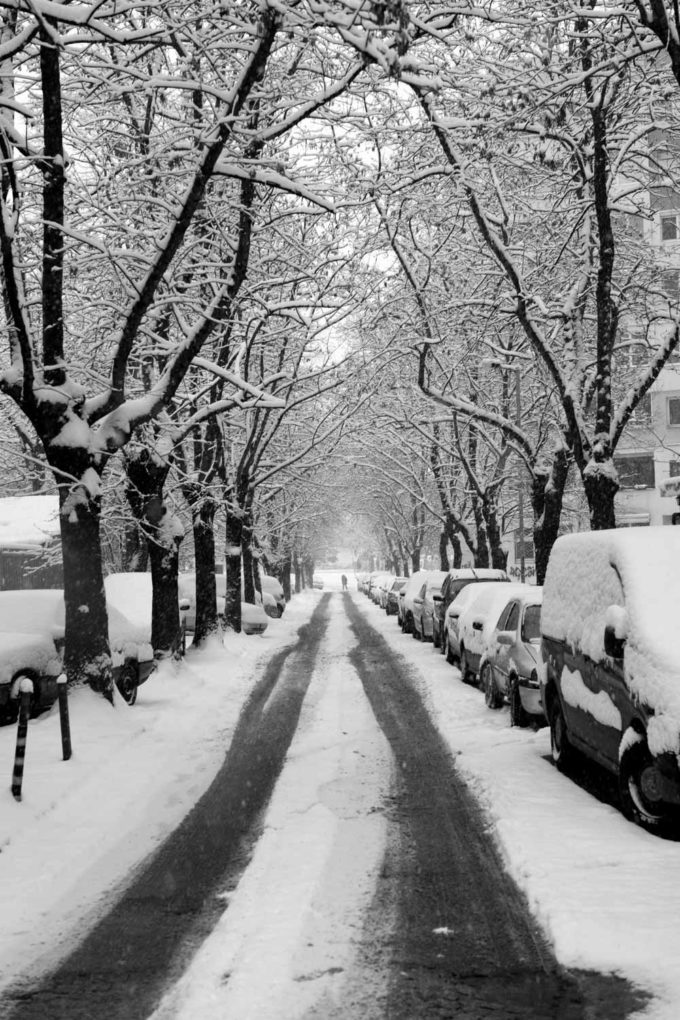
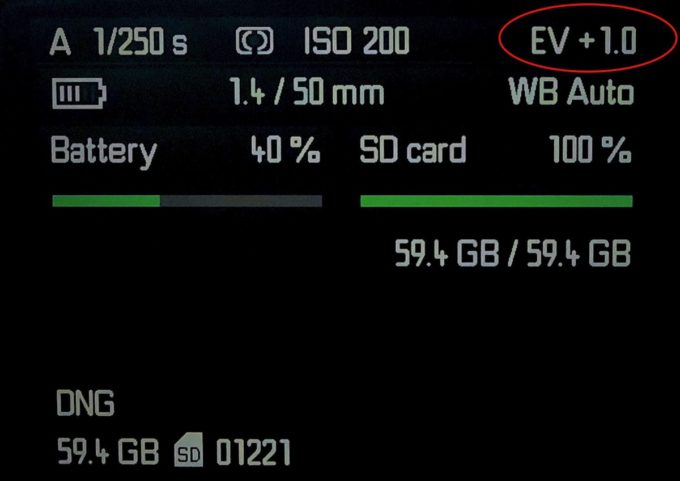
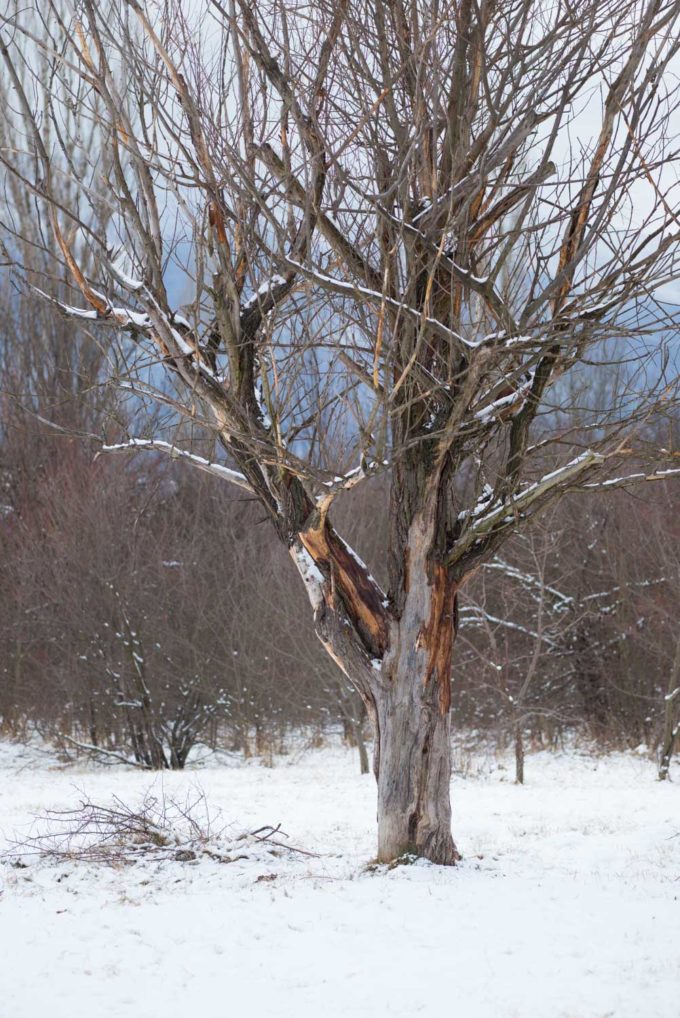
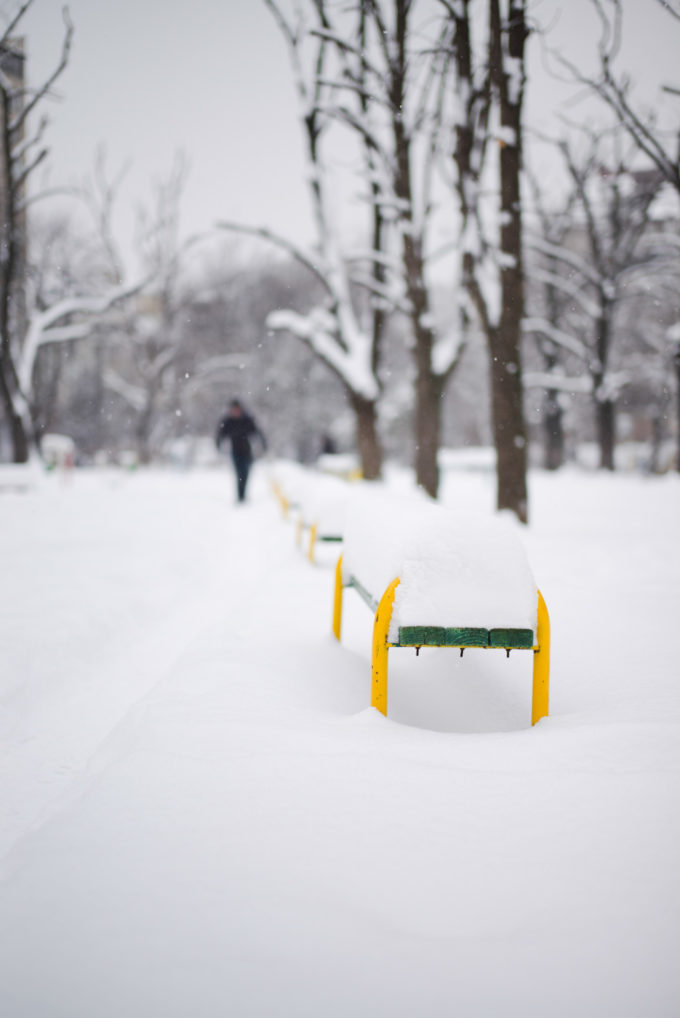
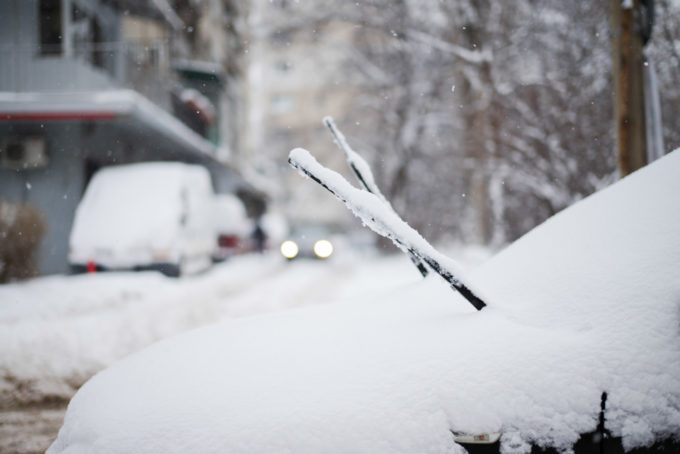
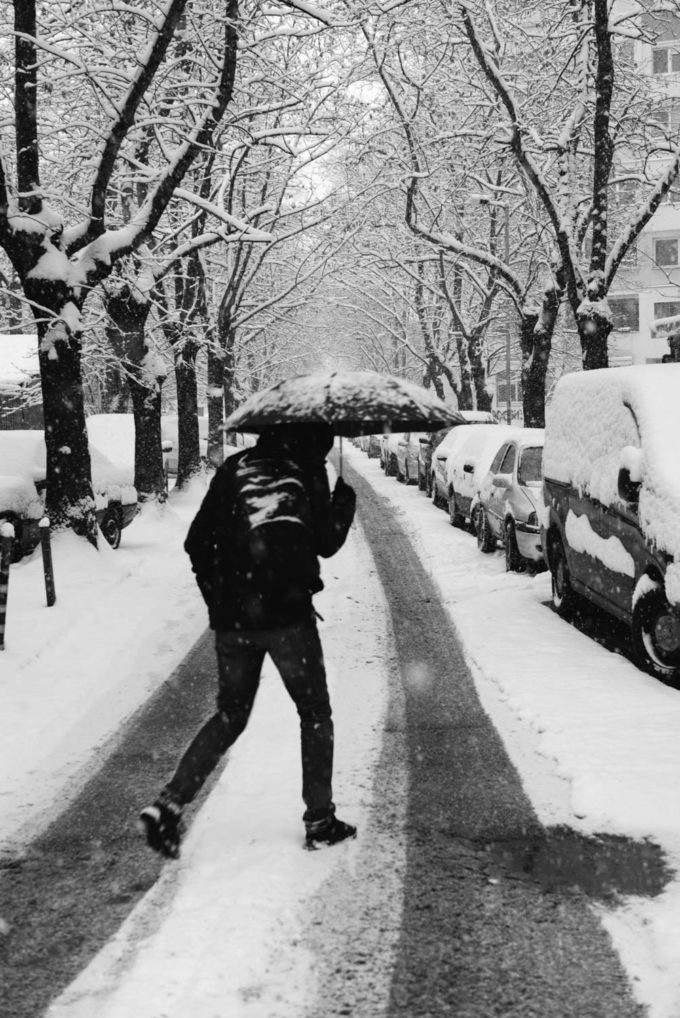
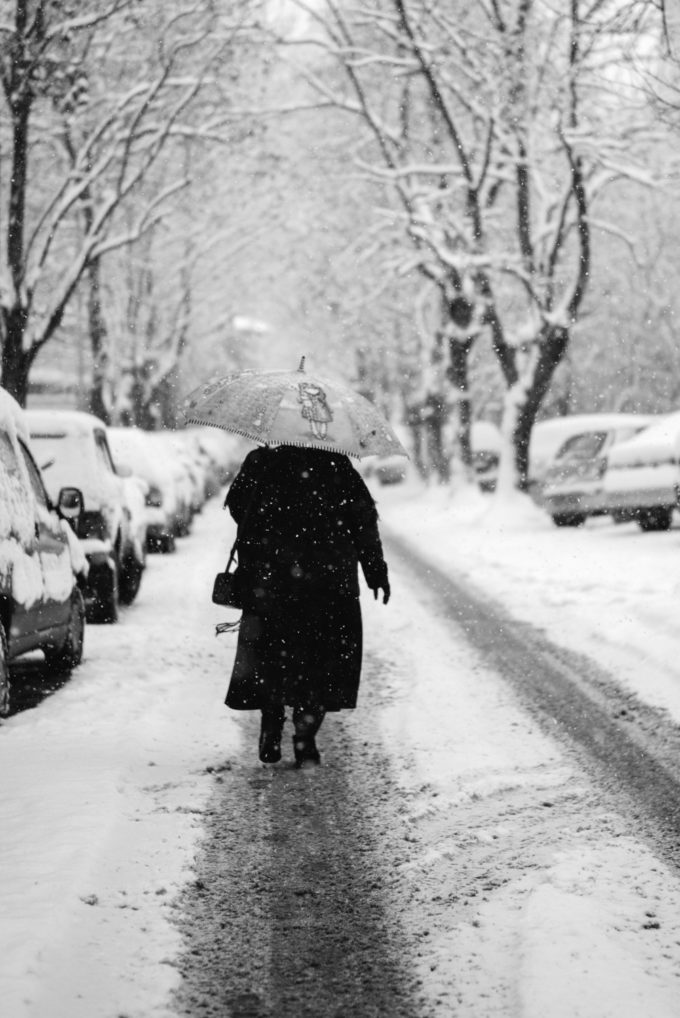


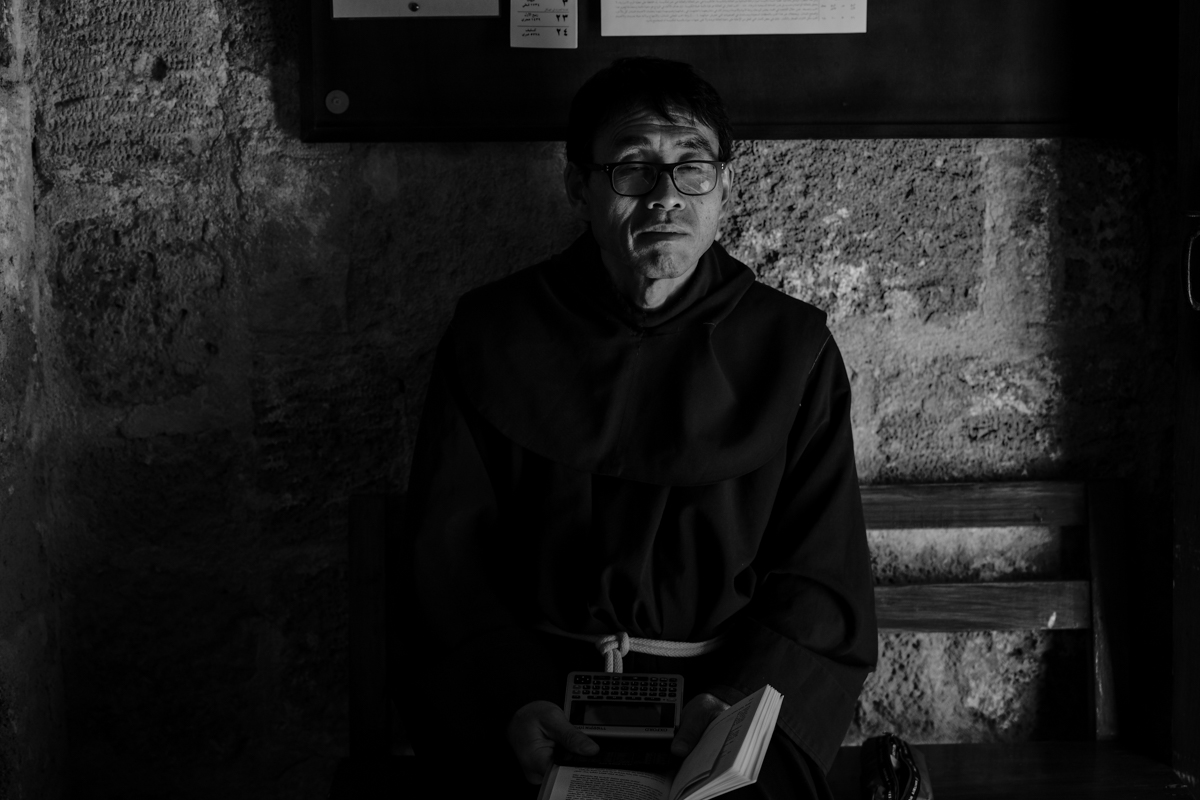
Snow actually is quite easy- think about is as shooting in a studio with a lot of fill light all around you
You know what they say- the tool is not important. But… I find the M very easy to use. You can measure snow with any camera property- just don’t let the camera measure from the snow
No filters at all. I love the contrast that the snow brings in Black and White. It frames the subjects.
Always found snow to be a challenge, specially when contrasty objects appear in the scene. Was wondering whether you had used any filters in front of your lens or whether it was a conscious decision not to use them.
These are some of the most natural looking, un-digital street scenes I’ve seen that don’t involve film. I especially have a hard time with the value distributions (like, histogram shapes) for the B&W shots that natively come out of most digital cameras. But my opinion is probably influenced by my age. Younger folks will be more accustomed to how digital maps out the tones.
Does this mean I need to sell my car and get an M240??
Lovely photos
Excellent post, no snow where I come from, I imagine it would be difficult at times to get it right.